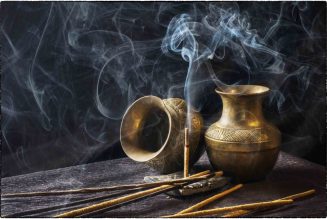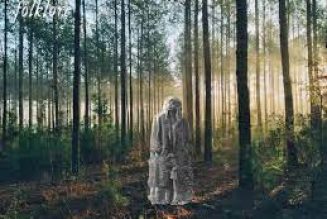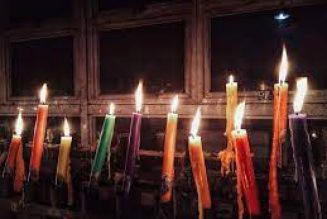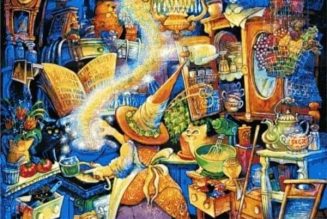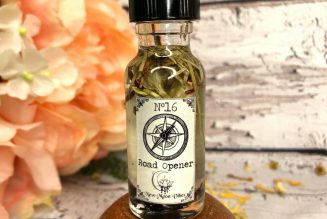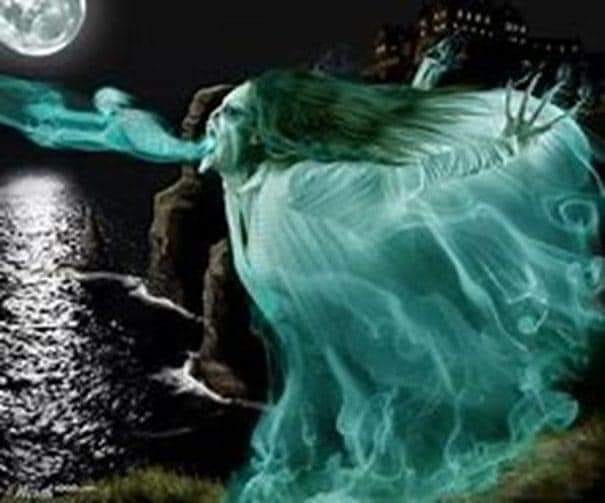
The banshee (from ban [bean], a woman, and shee [sidhe], a fairy) is an attendant fairy that follows the old families, and none but them, and wails before a death. Many have seen her as she goes wailing and clapping her hands. The keen [caoine], the funeral cry of the peasantry, is said to be an imitation of her cry. When more than one banshee is present, and they wail and sing in chorus, it is for the death of some holy or great one. An omen that sometimes accompanies the banshee is the coach-a-bower (Cóiste Bodhar)–an immense black coach, mounted by a coffin, and drawn by headless horses driven by a Dullahan. It will go rumbling to your door, and if you open it, according to Croker, a basin of blood will be thrown in your face. These headless phantoms are found elsewhere than in Ireland. In 1807 two of the sentries stationed outside St. James’s Park died of fright. A headless woman, the upper part of her body naked, used to pass at midnight and scale the railings. After a time the sentries were no longer stationed at the haunted spot. In Norway the heads of corpses were cut off to make their ghosts feeble. Thus came into existence the Dullahans, perhaps; unless, indeed, they are descended from that Irish giant who swam across the Channel with his head in his teeth. ¹
The banshee appears in a few different forms, she can appear as a beautiful, ethereal young woman, or a stately matron type, but she is most commonly depicted as a crouching old hag with a hideous wrinkled face. She is also said to be the ghost of a woman who died in childbirth, and sometimes appears as a crow, stoat, hare, or weasel.
Whatever form she is witnessed in, she usually has long silver hair that she is brushing with a comb. Because of this, there is a superstition in Ireland that if you find a comb lying in the woods, you shouldn’t pick it up or you’ll be kidnapped and taken away by fairies. Although most people don’t touch mouldy forest combs for hygiene reasons.
She is said to wear either a grey hooded cloak or the grave robe of the dead, and her eyes are perpetually red from crying.
Many believe that she can take any of the above forms and change between them as she pleases.
Any child who grew up in Ireland has heard the stories of the banshee, who screams and wails mournfully outside of a house if a family member is about to die.
Aside from that, she isn’t known to interact with humans very much, never getting any more physical than scratching at the windows and doors of the unfortunate family. Which when you think about it, is beyond horrifying.
The sound of the screams is also a matter for debate, with people from different parts of Ireland claiming different screams. In Leinster, the scream is said to be so shrill that it shatters glass, in the north, it sounds like two boards being slammed together, and in Kerry, it’s a low pleasant singing.
Regardless of the sound, she is sometimes heard screaming for a few days before the death actually occurs, and sometimes just once.
Aside from being an omen of death, the banshee would also cry at the crowning of a true king, a famous example occurring at the crowning of Brian Bóru.
There are also stories that state that only descendants of legendary king Brian Bóru will hear the banshee’s cry. And another stating that only five specific families are targeted by the banshee: The O’Brien’s, O’Neills, O’Connors, O’Grady’s, and Kavanaghs.
The idea behind the banshee comes from medieval times, when women called keeners were paid to come to funerals and sing sad songs called Caoineadh (the Irish word for ‘crying’). As ridiculous as this sounds, families would actually pay a lot of money for a talented keener.
It is said the most wealthy and powerful families would hire a Bean Sidhe or ‘fairy woman’ to come and keen at the grave, since as we all know, fairies are much better singers than humans.
The myth was built upon by the fact that, in a true stereotypical Irish fashion, the keeners would be paid only in alcohol, and would end up as alcoholic old women who would eventually get banished from their communities as a result.
As for the scream, many believe it likely came from people hearing the screech of a barn owl late at night.
Again, since Irish mythological stories were mostly passed on orally, there are not a lot of ‘confirmed’ encounters with a banshee. But here are some famous ones.
In 1437, a woman claiming to be a seer approached King James I of Scotland and told him he would be murdered at the Instigation of the Earl of Atholl and he was.
Another, more recent case was in 1801 when Robert Cuninghame, the Commander in Chief to the British Forces in Ireland, dubbed the 1st Baron of Rossmore, invited some people to his house in County Wicklow after a party in Dublin castle. During the night, some guests reported hearing a ‘deep, heavy, throbbing sigh’ followed by a low voice saying ‘Rossmore’ repeatedly. The next morning the guests learned that their host had died suddenly during the night. ²

